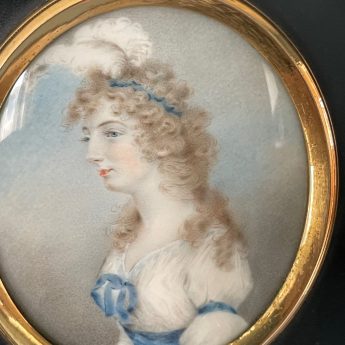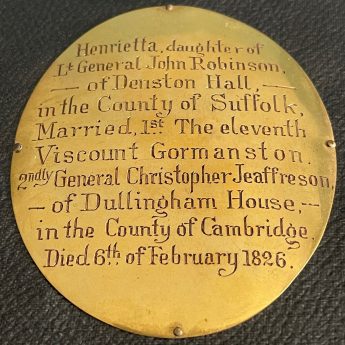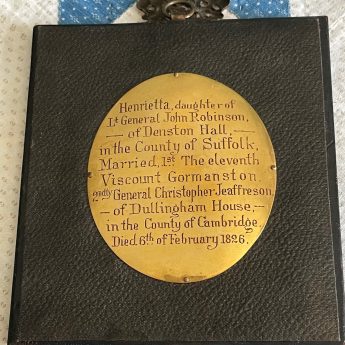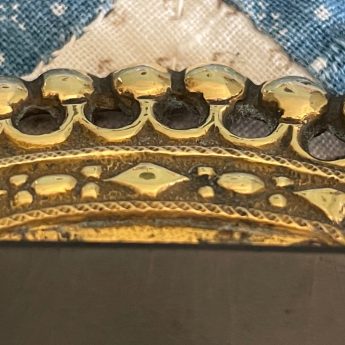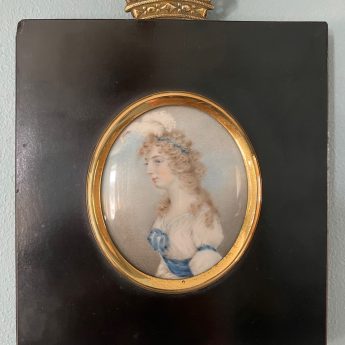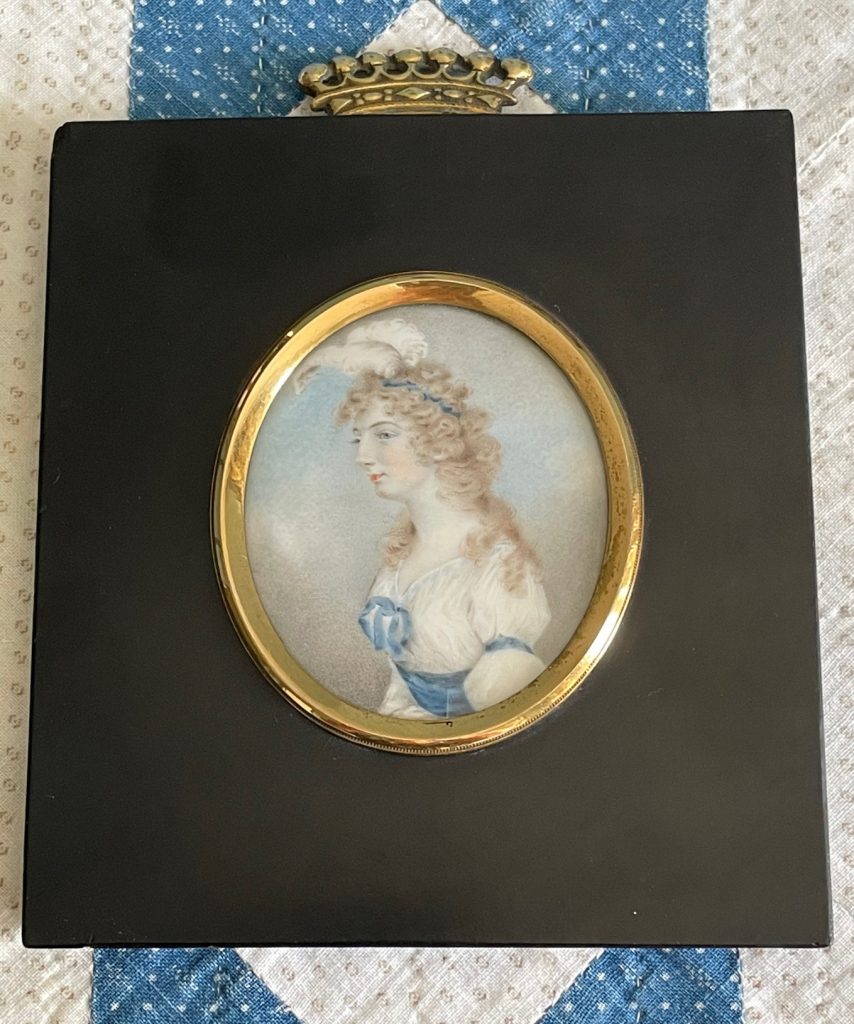
Viscountess Gormanston
Portrait miniatures, silhouettes, portraits & an omnium-gatherum of historical interest & character.
Enquiries and orders
Viscountess Gormanston
Archibald Skirving
£980
This portrait may have been commissioned to mark the betrothal and marriage in 1774 between Henrietta Robinson and Anthony Preston. It shows a wistful-looking Henrietta in a white dress trimmed with blue ribbon, her blonde curls decorated with a matching headpiece topped with ostrich feathers.
Born in 1740, Henrietta Honnetta was the eldest child of Lt. Gen. John Robinson and his wife Elizabeth Coates. She grew up in the fine surroundings of Denston Hall in Suffolk, the Robinson family home since 1617. Henrietta married Anthony Preston, de jure 11th Viscount Gormanston, an Irish peer. The family seat was the impressive Gormanston Castle in Co. Meath north of Dublin. Henrietta and Antony quickly had a son, Jenico, in 1775 who inherited the Viscountcy at the age of eleven upon his father’s death.
Henrietta eventually re-married in 1794. Her new husband was Lt. Gen. Christopher Jeafferson (1761-1824), twenty years her junior, whilst her new home was the recently built Dullingham House in Cambridge with gardens designed by Humphrey Repton. At the age of 54, Henrietta gave birth to a daughter, Henrietta Harriet. She was in her 86th year when she died at her childhood home in Suffolk, having outlived her second husband.
The portrait is in fine condition and resides in a specially-commissioned papier-mâché frame with a coronet hanger of touching ‘pearls’ denoting the rank of Viscountess. The reverse of the frame has a brass plaque engraved with the sitter’s details.
The son of a Scottish tenant farmer, Archibald Skirving (1749-1819) began his artistic career in the 1770s whilst also working as a clerk in the Edinburgh Customs Office. A decade later he made the brave move to London to become a full-time miniaturist though he only stayed two years. He subsequently spent time in Rome but in 1794, whilst sailing homeward, was taken prisoner by the French and accused of espionage. Nine months in prison took a toll on his health especially on his eyesight though, upon his return to his native Scotland, he continued to paint portraits in pastel and oils. Not long before his death in 1819, the historian Thomas Carlyle colourfully described Skirving as “an altogether striking man … one of the cleanest old men I ever saw … nose hooked like an eagle’s bill, eyes still with something of the eagle’s flash in them … chin all betokening impetuosity, rapidity, delicacy and the stormy fire of genius not yet hidden under the ashes of old age. A face and figure never to be forgotten.”
APHA Registration: A63QGN7G
Item Ref. 7091
Size: framed, 125 x 113mm
Provenance: Dullingham House, Cambridge
You may also like...
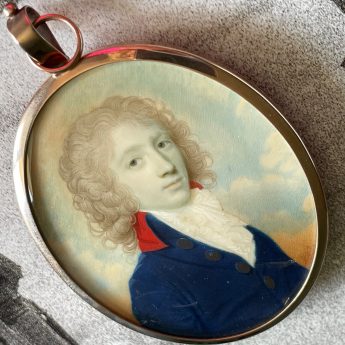
Jenico, Viscount Gormanston
Walter Robertson
Sold
